The Ultimate Guide to Achieving Your Dream Outdoor Kitchen
The kitchen is often referred to as the busiest room in the house, it’s no wonder that outdoor kitchens have become an increasingly popular staple for us to enjoy throughout the warmer months, and beyond! From family barbecues to pizza-making parties, there are so many selling points to outdoor kitchens. To help you plan your perfect outdoor space, follow our guide to achieving that dream outdoor kitchen.
1. Pick a Location
As with any home project, the beginning stages of creating your outdoor kitchen will involve a lot of planning.
Firstly, consider how you will be using your outdoor kitchen. What type of appliances will you be using? BBQ, pizza oven, a Big Green Egg… each will have its own practical considerations to factor in. Do you want a dining or seating area directly next to it? Perhaps with a firepit? Would you like any integrated seating? These are all examples of things that you will need to think about before deciding on where to place your outdoor kitchen. It’s also important to check on any requirements for planning permission, as this will vary depending on a number of factors.
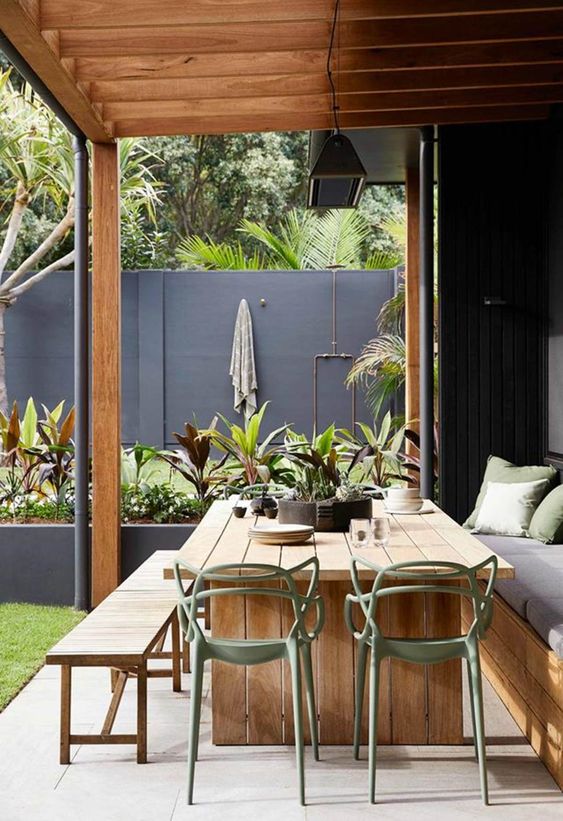
Image Credit:
Homes to Love 2. Plan Your Layout
An outdoor kitchen should be planned and designed in the same way as an indoor kitchen. When thinking about what layout you are going to go for, think about the flow of your garden, how it connects from inside to outside and how you will be using the space overall. A straight line or ‘galley’ type layout is popular for outdoor kitchens, often linked straight out from an outside wall onto the patio – this takes up less room so is a good option if you’re concerned about available space. Another popular layout, perfect for those that like to entertain, is the L-shape with built-in seating and bar area. As with any kitchen, some of your layout decisions will depend on the positioning of appliances, plumbing, and electricity, so you will need to factor that into the planning stages.
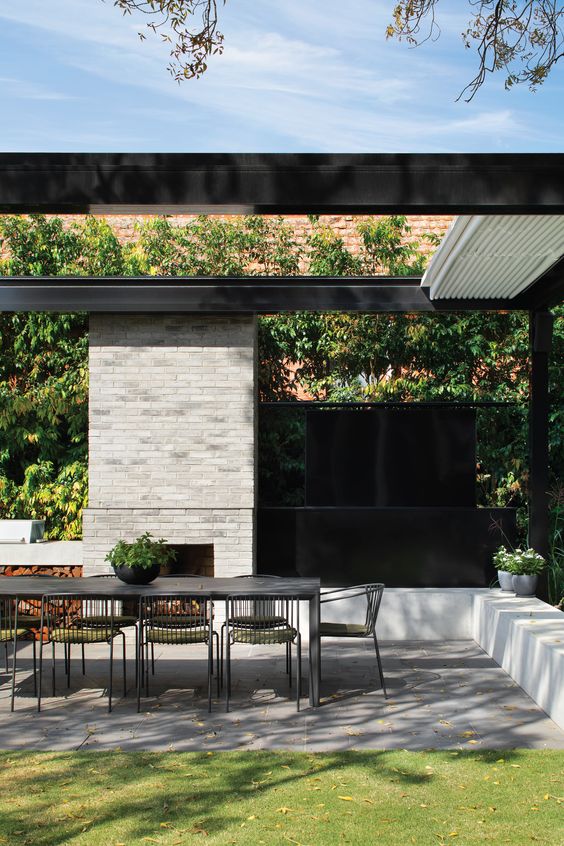
3. Choose Your Surfaces & Materials
When it comes to the best materials and surfaces for outdoor kitchens, the key consideration (as with anything in the UK) is the British weather. You must ensure that your outdoor paving, worktops, and any other materials will stand the test of time and can survive our continually unpredictable weather!
Porcelain paving, stainless steel, and natural stone will all last if they are good quality. Our range of
outdoor porcelain paving is full of beautiful options that will extend your home into your outside space. Durable, low maintenance and weatherproof, the 20mm tiles are ideal for an outdoor kitchen. For more help choosing your outdoor porcelain paving, have a read of our
helpful guide.
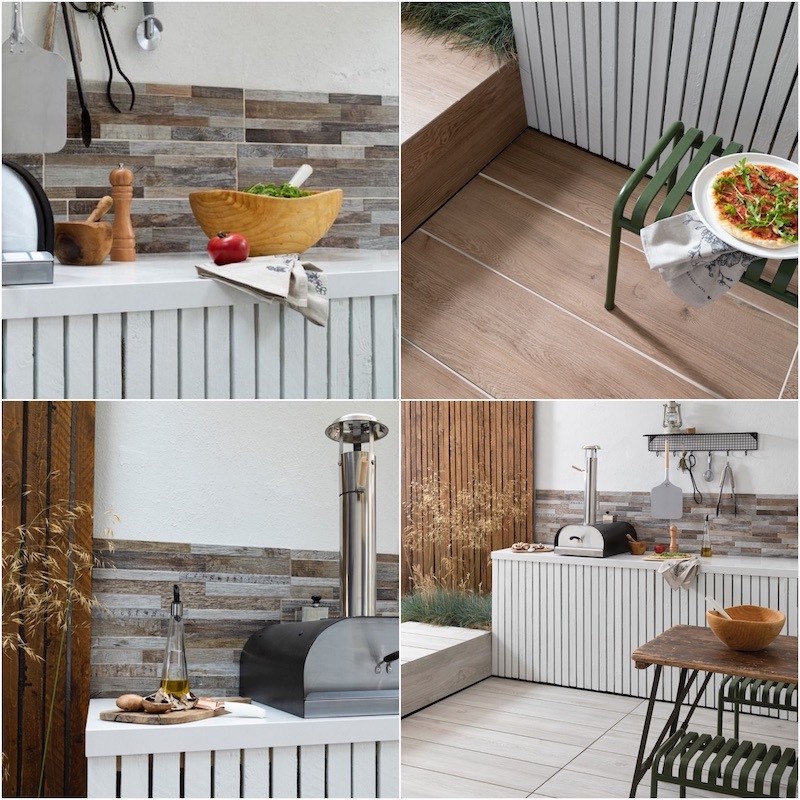
Top left and bottom:
Inwood Beige | Top right:
Oaktime Cherry | Bottom Right:
Oaktime Milk shown with
Inwood Beige 4. Select Your Entertaining Must-Haves
Whether it’s for family or friends, your outdoor kitchen area will be used for entertaining. As much as you would do with your living room and dining room, consider what furniture you would like to have and how these areas will fit into your layout. The best way to create that indoor/outdoor feeling is to create cohesion between your style. Add plenty of accessories as finishing touches such as cushions, throws, candles, and lighting and you’ll have your ultimate outdoor entertaining area in no time. Image Credit: Real Homes
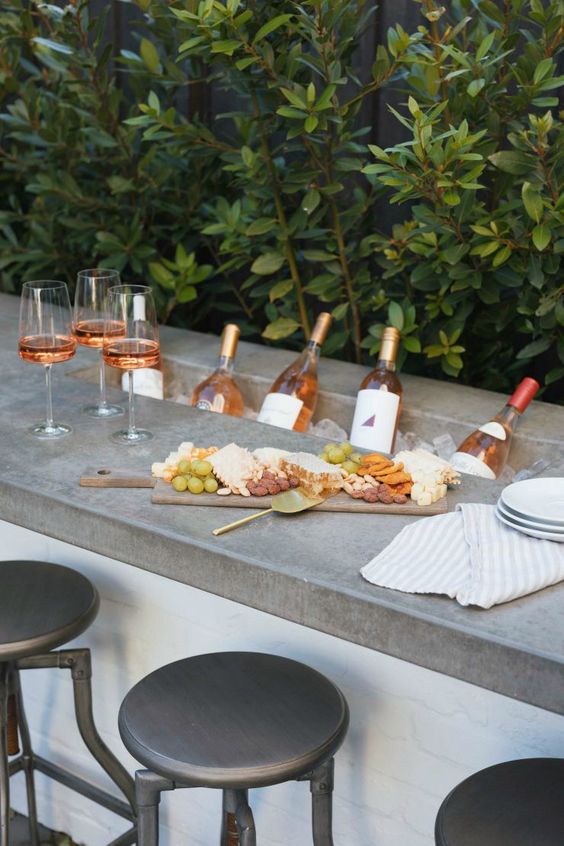
Image Credit:
Real Homes
5. Plan For The Weather
As well as thinking about the materials you choose, you should think about how you will protect your outdoor kitchen area from the elements. It’s not just rain you have to think about – the sun’s UV rays can also affect materials and surfaces. Often, outdoor kitchens can be installed under a bit of shelter, such as a pergola, so that it isn’t fully covered but just enough to help protect the area. For the winter months, make sure you invest in some high-quality waterproof coverings.
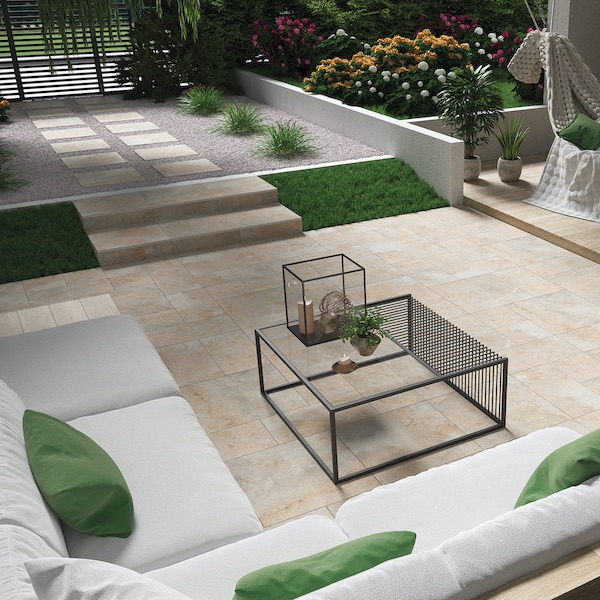 Burlington Ivory
Burlington Ivory 6. Use Professionals
An outdoor kitchen is a big project and investment, it’s not something you will want to get wrong as that will cost you more time and money in the future. Seek the advice of professionals even if you are self-installing, in particular with aspects such as plumbing, power, and electricity.